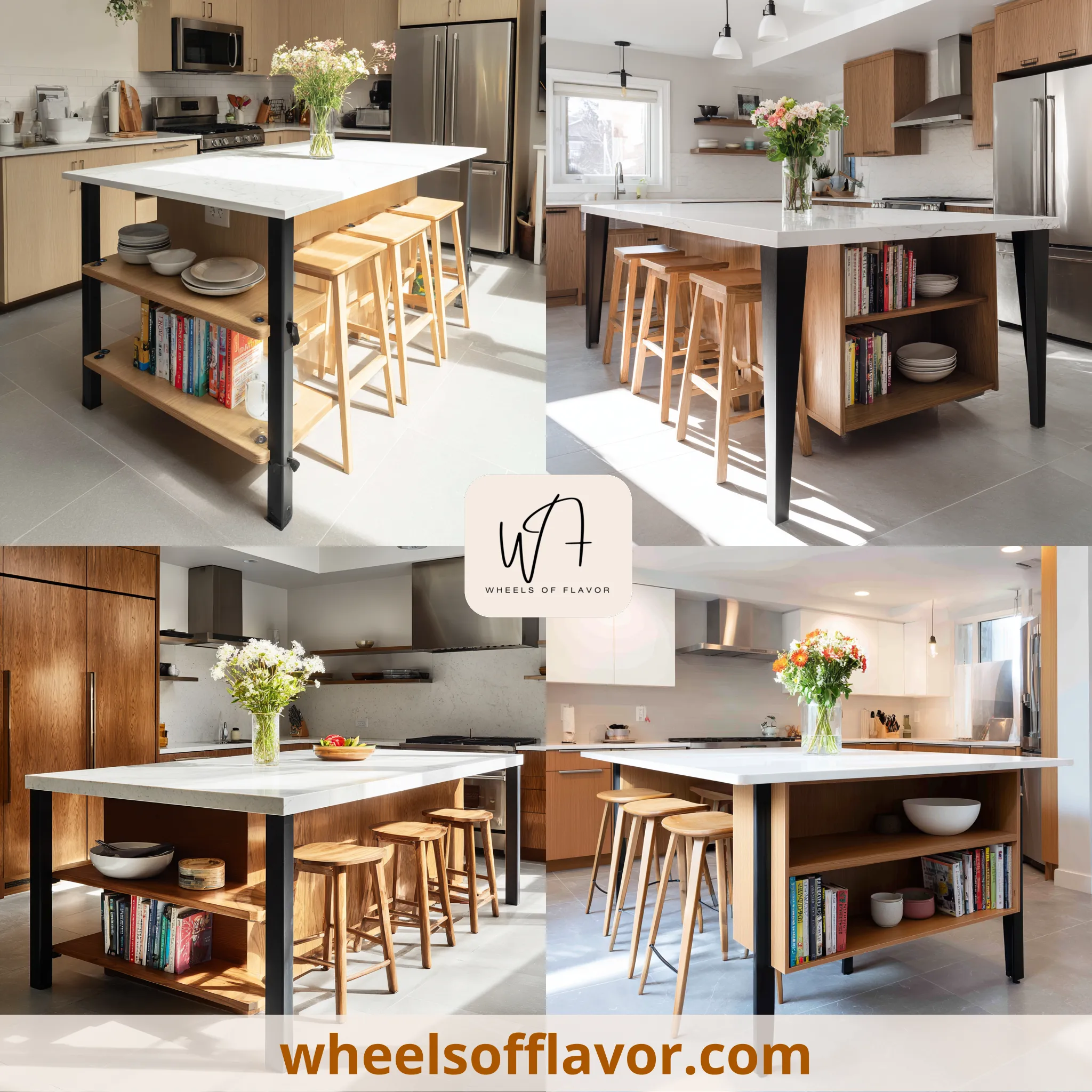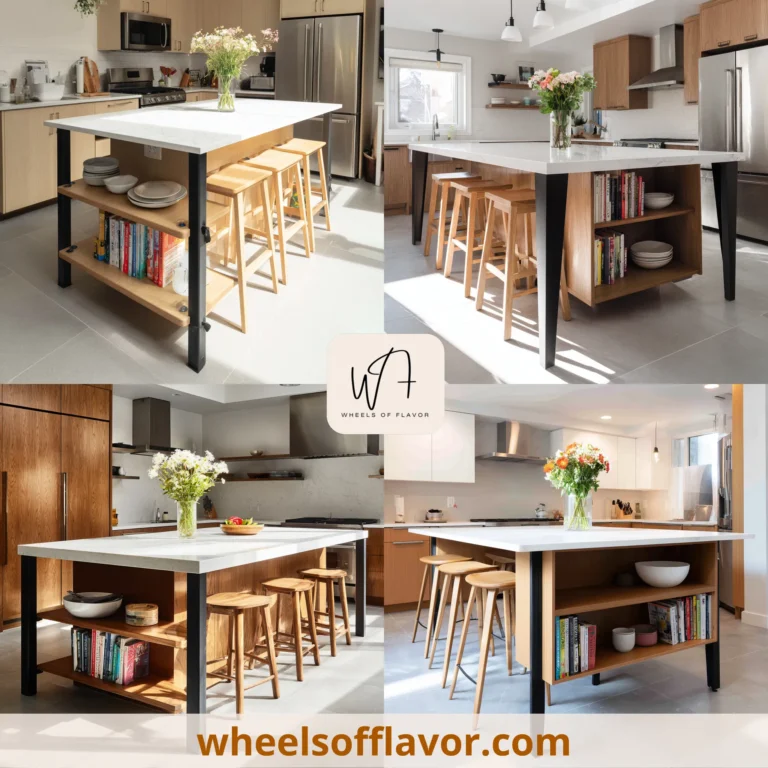
When planning a kitchen remodel or upgrade, the kitchen island often takes center stage, and its legs are more than just structural supports—they’re a design statement. Choosing the right kitchen island leg ideas can transform your space from ordinary to extraordinary. Legs define the island’s style, contribute to the overall aesthetic, and impact functionality. Whether you’re aiming for a rustic farmhouse look with turned legs or a sleek modern vibe with metal hairpin legs, the options are vast. This article explores creative and practical kitchen island leg ideas to help you make an informed decision. We’ll cover various materials, styles, and installation tips to ensure your island not only looks stunning but also stands the test of time. A well-chosen leg design can enhance storage, improve accessibility, and even increase your home’s value. By focusing on this often-overlooked element, you’ll unlock the full potential of your kitchen. Let’s dive into how the right legs can elevate your island and, by extension, your entire cooking and gathering space.
Classic Wooden Legs for Timeless Kitchen Island Leg Ideas
Wooden legs are a popular choice for kitchen island leg ideas, offering warmth and versatility. They come in various styles, such as turned legs for a traditional look or square legs for a more contemporary feel. Hardwoods like oak, maple, or walnut are durable and can be stained or painted to match your cabinetry. For a DIY approach, consider using pre-made legs from hardware stores, which can be attached with brackets for stability. These legs not only support the island but also add character; for instance, carved details can evoke a rustic charm. When installing, ensure the legs are properly secured to the floor or base to prevent wobbling. Wooden legs pair well with countertops like granite or butcher block, creating a cohesive design. They're also easy to maintain with occasional polishing. For inspiration, check out This Old House's guide to kitchen islands, which highlights wood options. Remember, the height and thickness of the legs should proportional to the island's size for both aesthetics and safety. If you're on a budget, reclaimed wood legs can add unique history to your space. Explore more on our site, like our article on https://wheelsofflavor.com/wooden-kitchen-upgrades, for related tips.
Modern Metal Legs: Sleek Kitchen Island Leg Ideas
For a sleek, industrial, or minimalist look, metal legs are excellent kitchen island leg ideas. Options include hairpin legs, which are thin and angled for a mid-century modern vibe, or tubular steel legs for a robust, contemporary feel. Metal legs are often made from steel, iron, or aluminum, and can be finished in black, chrome, or brushed nickel to complement your hardware. They're lightweight yet strong, making them ideal for islands with heavy countertops like quartz. Installation typically involves welding or using heavy-duty screws, so it's best to consult a professional if you're not experienced. Metal legs can create an open, airy feel by allowing more visible floor space, which is great for small kitchens. They're also easy to clean and resistant to moisture, but may require anti-rust treatments in humid environments. Consider pairing them with open shelving beneath the island for added storage. These legs work well in urban lofts or modern homes, adding a touch of sophistication. For durability, look for powder-coated finishes that resist scratches. When planning, measure carefully to ensure the legs provide adequate support without obstructing movement. Metal legs can be a statement piece on their own, so keep the rest of the design simple to let them shine.
Creative and Custom Kitchen Island Leg Ideas for Unique Spaces
If standard legs don't suit your style, explore creative kitchen island leg ideas for a personalized touch. This could include using repurposed items like vintage table legs, plumbing pipes for an industrial look, or even concrete legs for a ultra-modern aesthetic. Custom carpentry allows for unique shapes, such as tapered or fluted legs, which can be tailored to your kitchen's theme. For DIY enthusiasts, building legs from scratch with materials like plywood or metal rods can be rewarding; just ensure they meet load-bearing requirements. Another idea is to incorporate storage into the legs, like small drawers or shelves, maximizing functionality. When going custom, work with a designer to balance creativity with practicality, ensuring the legs don't compromise stability. These options are perfect for making your island a focal point, especially in open-plan homes where the kitchen blends with living areas. Consider the weight distribution—custom legs may need additional bracing. For inspiration, look at architectural magazines or online platforms that feature innovative designs. Creative legs can reflect your personality, whether it's through colorful paints or intricate patterns. Just remember, uniqueness shouldn't come at the cost of safety; always test the island's stability after installation.
Practical Considerations for Implementing Kitchen Island Leg Ideas
Before finalizing your kitchen island leg ideas, address practical aspects like height, spacing, and installation. The standard counter height is 36 inches, so legs should be sized accordingly, with adjustments for bar overhangs if needed. Spacing between legs affects stability; for larger islands, four legs are common, but six can provide extra support. Consider the floor type—legs on uneven surfaces may require leveling feet. Installation methods vary: some legs bolt directly into the island frame, while others use plates or brackets. If you're doing it yourself, use a stud finder to secure legs to wall studs for freestanding islands, or anchor them to the floor. Weight capacity is crucial; calculate the load from the countertop, appliances, and frequent use. Also, think about cleaning—legs with intricate designs might collect dust, so opt for smooth surfaces if ease of maintenance is a priority. For safety, ensure there are no sharp edges, especially in homes with children. Consulting a contractor can prevent costly mistakes. Additionally, check local building codes for any requirements. By planning these details, you'll ensure your kitchen island is not only beautiful but also functional and safe for years to come.
Conclusion
In summary, kitchen island leg ideas play a pivotal role in defining your kitchen's style and functionality. From classic wooden legs that bring warmth to modern metal options that offer sleekness, the choices are diverse and impactful. We've explored how creative custom designs can personalize your space, while practical considerations ensure safety and durability. By carefully selecting legs that complement your overall design, you can enhance both the aesthetics and usability of your island. Remember, the legs support not just the structure but also your daily activities, from meal prep to social gatherings. As kitchen trends evolve, we might see more integrated smart features or sustainable materials in leg designs. For now, focus on balancing form and function to create a island that meets your needs. Take action by sketching your ideas, consulting professionals, and visiting showrooms for inspiration. Your dream kitchen is within reach—start with the legs to build a foundation of style and strength.
Frequently Asked Questions
Q: What are the most durable materials for kitchen island legs?
Durable materials for kitchen island legs include hardwoods like oak or maple, which resist wear and can be sealed for moisture protection, and metals such as steel or aluminum, often powder-coated for scratch and rust resistance. For high-traffic kitchens, metal legs are generally more robust, while wood offers timeless appeal but may require more maintenance.
Q: Can I install kitchen island legs myself, or should I hire a professional?
DIY installation is possible for simple leg types like pre-made wooden or hairpin legs using brackets, especially if you have basic tools and skills. However, for custom designs, heavy countertops, or complex anchoring, hiring a professional is recommended to ensure stability and safety, as improper installation can lead to wobbling or collapse.
Q: How do I choose kitchen island legs that match my kitchen's style?
Match kitchen island legs to your style by considering the overall theme: for traditional kitchens, opt for turned wooden legs; for modern spaces, choose sleek metal legs like hairpins; and for industrial looks, use pipe-based legs. Coordinate finishes with existing hardware and cabinetry, and look at inspiration photos to ensure cohesion. Testing samples in your space can help visualize the final look.

